The Park and Stride initiative by Galway City Council in partnership with An Taisce-Green Schools is welcomed by the Galway Cycling Campaign and Galway Cycle Bus, yet they warn that this is only a baby step in creating safe routes to school for thousands of children across the city.
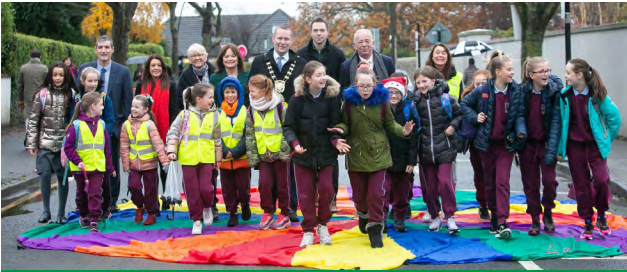
More radical measures are needed to ease front of school congestion and create space for social distancing, including vehicle-free entrance for children walking and cycling, discouraging or preventing illegal parking, widening footpaths, and providing new pedestrian crossings and cycleways.
All of these travel measures are in the An Taisce-Green Schools ‘Safe to School: An Ideas Document for Safe Access to Schools’, which presents ideas for responding to school gate congestion and social distancing requirements since the Covid-19 pandemic.
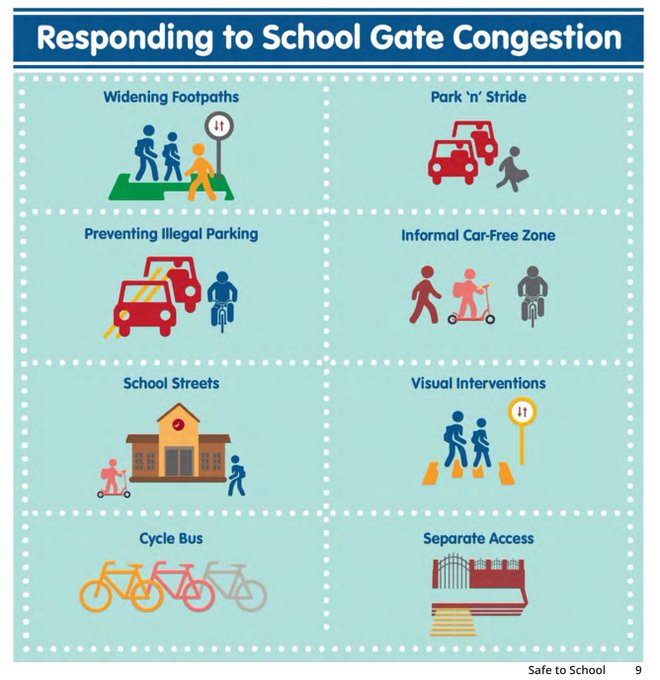
The government’s July Stimulus provides funding from the National Transport Authority (NTA) to Local Authorities to widen footpaths, provide pedestrian crossings and cycleways, and other Covid-19 related works.
In addition to enabling active travel, such road works would boost business for local construction companies and contractors.
Park and Stride
Though Park and Stride is one suggested measure, it has a number of downsides, including creating extra administration for schools, not enabling a switch to active travel from children’s front doors, and lacking objective measures of success. It is widely accepted that Park and Stride to school schemes are better suited to rural or semi-rural areas, rather than our city centres and suburbs.
School Streets
The Galway Cycle Bus has long advocated for School Streets. “A School Street is a road outside a school with a temporary restriction on motorised traffic at school drop-off and pick-up times,” explains Neasa Bheilbigh, a primary school teacher and co-organiser of the Galway School Cycle Bus.
“Local authorities have powers to use traffic management orders to turn a street into a pedestrian and cycle zone, or School Street, for specific times during the school drop and collection. A trial in Malahide last autumn was a terrific success and championed by then Mayor of Fingal, Cllr. Eoghan O’Brien of Fianna Fáil. It made the school run safer – and that was before coronavirus.”
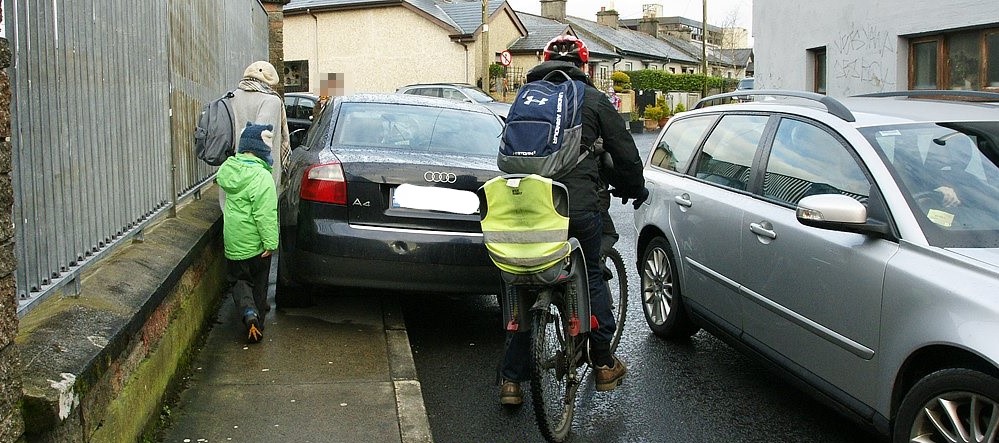
Ms Bheilbigh voices concerns with the new initiative.
“Park and Stride only encourages people driving cars to park elsewhere within a 10 minute walk of the school. People driving cars can still park up at the school door. It does not compel a behaviour change like School Streets, which restricts vehicle access to schools. Schools have no jurisdiction outside their school gates and so have no power to enforce Park and Stride, or illegal parking on footpaths and double yellow lines.”
“Furthermore, we do not have plans from the council to provide protection from traffic, or more space for social distancing, outside school grounds,” she continues. “This is vital for families who have multiple start times due to staggering of school hours.”
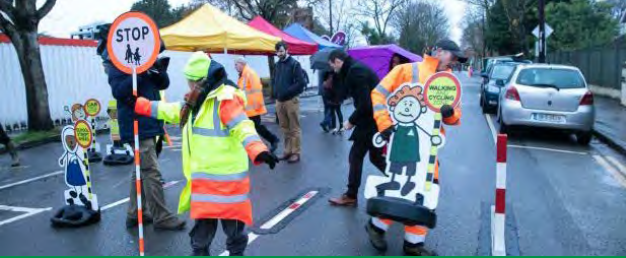
Secondary schools
“Child-centred schools begin on the school drop,” says Alan Curran of Galway School Cycle Bus, who is also a teacher at Coláiste Éinde on Threadneedle Road, Salthill. “Walking and cycling has to be a convenient and safe option.”
Bike parking at schools
He continues, “My concern as a second level teacher is the mixed messages about cycling and the impact on bike parking. While all the Covid-19 guidance is about encouraging children to walk or cycle where possible, schools cannot allow students to gather in groups.”
“Up to 80 teenagers cycle per day here at St Enda’s secondary school. We need guidance and funds to make safe and socially-distant bike parking. Some schools have re-allocated bike sheds to create additional classrooms, and so need a completely new provision of bike stands.”
Cycle lanes on school routes
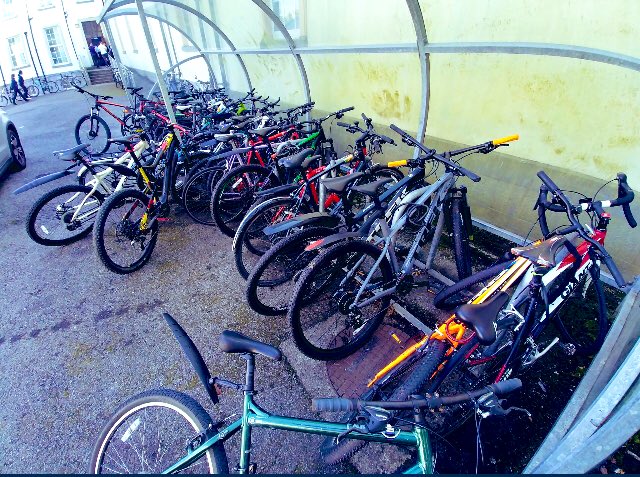
“Temporary pop up cycle lanes on the access roads to schools should have been a priority for the city council prior to schools reopening from next Thursday,” says Kevin Jennings, chairperson of Galway Cycling Campaign and lecturer at NUI Galway.
“To facilitate safe cycling routes to schools, Dublin City Council is installing a 3.5km segregated cycle lane along Griffith Avenue. This will act as a ‘spine’ to local schools and DCU.
A similar 3.5km school route in Galway would stretch from Coláiste Éinde and Salerno in Salthill to city centre schools like The Bish, Our Lady’s College, and St Patrick’s, Mercy, and St Nicholas’ primary schools via a plethora of schools such as Scoil Éinde, Scoil Róis, Dominican College, Scoil Fhursa, St Mary’s College, and the Jes primary and secondary schools.
“There’s still time to create temporary cycle lanes en route to NUI Galway and GMIT,” he says. “Higher education institutions are busy planning some form of on-campus learning experience, which will be vital for incoming first year students. We need to protect their mental health, provide quality education, and create a community for them. Cycling is fun, sociable while appropriately distant, healthy, and smart in a university city.”
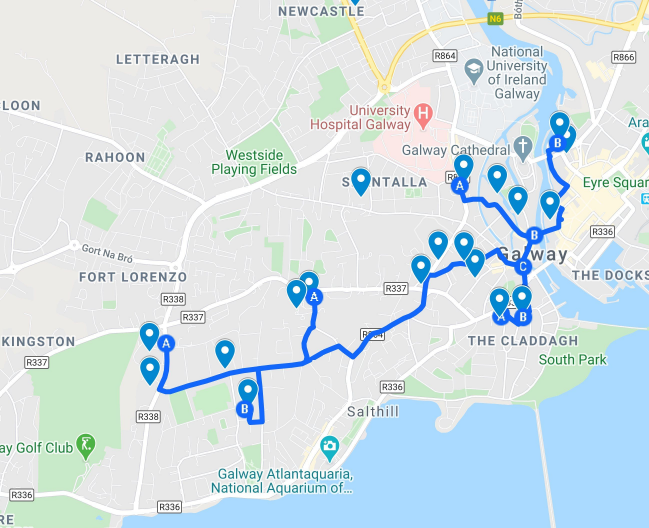
“Tweaks to pre-covid public realm and transport plans are not fit for purpose for our needs this autumn-winter,” concluded Mr Jennings. “One third of this city’s population goes to school at all levels as students or workers. We need better and safer routes to school.”
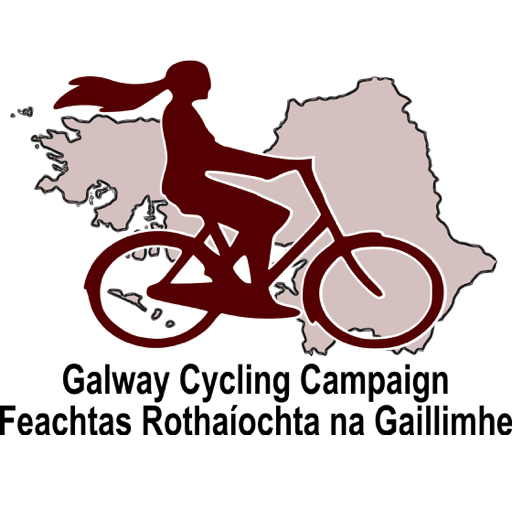
Leave a Reply